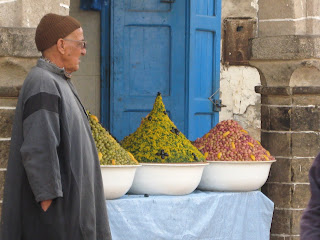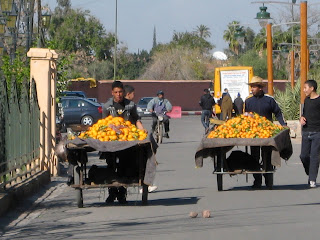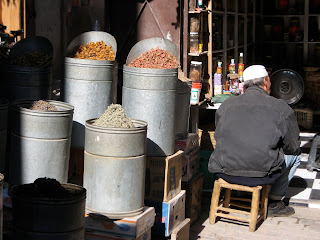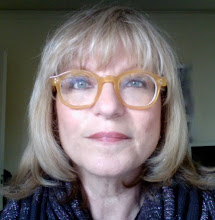Yesterday we fled freezing Paris for Morocco. We arrived in Marrakech after dark, checked into an exotic
riad where we were offered mint tea and walnut-stuffed dates, and directed to a wonderful restaurant for dinner, where we had incredibly delicious
salades marocaines,
pastilla, chicken
tagine and lamb
couscous while listening to music and watching a stout middle aged belly dancer with a tray of lighted candles on her head.
We had definitely entered a different world.
This morning we woke to sunny skies, warm weather and a delightful breakfast before climbing up to the rooftop patio of the
riad, from which we saw this nest of storks not far away.
All visitors to Marrakech head for the Jemaa Al-Fna, the large square in the center of the medina, known for its snake charmers, orange juice vendors and legendary hashish smoking, if I recall the '60s correctly. Having lived through them, I'm not sure I do.
So we headed to the square with directions from our riad. Along the way we saw spice vendors.
We saw alleyways leading to who knows where.
We saw bicycles, donkeys, motorbikes, bright ceramic tiles, dirty streets, lots and lots of people, most of whom didn't want their picture taken, and any number of things for sale, including pottery, leather, food, clothing, spices, jewelry, etc. Luckily we saw most of it before we had exchanged any currency.
And when we finally got to the square, we saw more of everything. And an even greater variety of people.
It's going to take time to process. Stay tuned.
























































